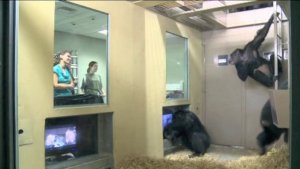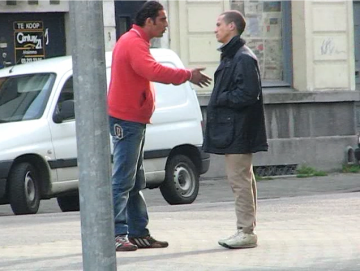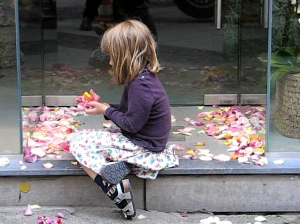In the lecture last week, we had guest speakers here to give speeches. The most interested part for me will be the Primate Cinemas that introduced by Rachel Mayeri. She works on the project with monkey and apes. Mayeri focused on how the monkey react to the image they received and what did the monkey like the most from many video clips. She observed what was the behavior of those chimpanzees after they watch the show on the TV. She also tried to find out which get chimpanzees’s attention more, sound or the image.
In this video, Mayeri mentioned that chimpanzee liked to watch cartoon or some other types of videos. Chimpanzees did not stay at a spot and finished watching the whole video for a long time, and chimpanzees would leave when they felt the video was boring to them then came back to the TV when the sound attracted them. I felt that was really interested and it also made me think that chimpanzees were like young kids. Young children like to watch the colorful image with simple story lines, and the period of how long they could focus on a thing was short too.
I felt that was really interested that Mayeri tried many different ways to get attention from chimpanzees. But all of the result were based on Mayeri’s assumptions. She compared the common and difference between chimpanzees and children. Chimpanzees will react when they see the video they liked same as children who will laugh when watch the interesting scenes.
In my opinion, chimpanzees are just like young human beings but they could communicate with the body language. When we were still in the young age, we could not express our feelings by speaking in a certain language, what we knew what to let others know what we were thinking was to communicate with our body language. Our parents also learn how to communicate with us. Parents will guess what was wrong with us when we cry, what was wrong with us if we got mad, and what will make us happy. Our parents will talk to us with the language and the body language which made us lean better and made us know what was the message they wanted to deliver easier.
Tzu-Hsien Yang (Anna)

 that one second. The man leans forwards to seem assertive. He pulls his hands out of his pocket in an explanatory gesture. His brows are furrowed, expressing frustration. And his mouth is smile-less and opens wide, so viewers can infer that the man is yelling and is unhappy. The other man stands up straight and keeps a straight face, but opens his mouth midway to interrupt- in a sense, defending himself when necessary. All this was gathered from a one second clip and anyone who saw could easily identify that there is a dispute between the two men.
that one second. The man leans forwards to seem assertive. He pulls his hands out of his pocket in an explanatory gesture. His brows are furrowed, expressing frustration. And his mouth is smile-less and opens wide, so viewers can infer that the man is yelling and is unhappy. The other man stands up straight and keeps a straight face, but opens his mouth midway to interrupt- in a sense, defending himself when necessary. All this was gathered from a one second clip and anyone who saw could easily identify that there is a dispute between the two men. playing with some of those petals. Her body movement suggests playfulness and the carefreeness associated with children. The way crossed-legged way she sits combined with her seemingly dancing/bouncing truly depicts youthfulness. She lifts the petals and the viewer can almost hear her singing a song.
playing with some of those petals. Her body movement suggests playfulness and the carefreeness associated with children. The way crossed-legged way she sits combined with her seemingly dancing/bouncing truly depicts youthfulness. She lifts the petals and the viewer can almost hear her singing a song.